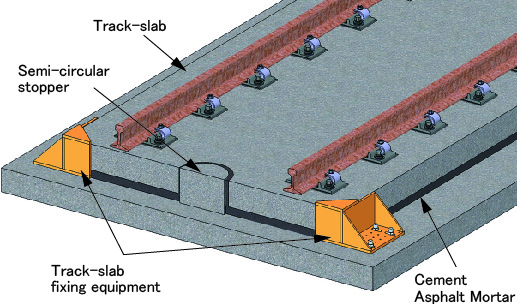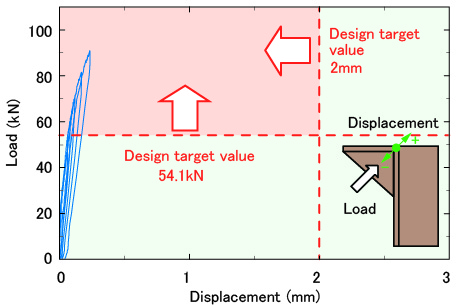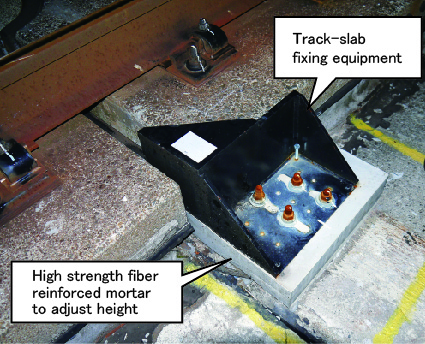2. Track-slab fixing equipment
- A track-slab fixing equipment was developed to improve the horizontal resistance force of existing track slab.
- A method was proposed to allow installation of the track slab fixing equipment in a way which is adapted to the layout conditions of the track slab in the field.
The most common A-type slab track, lateral displacement is restrained by circular stopper (hereafter CS). However, in areas around expansion joints and connections with bridges, large horizontal loads are generated due to rail and girder expansion and contraction, leading to filling material damage around the CS. On occasion this leads to salt corrosion on the steel rebars on some sections. Evidence has been collected to show that this type of damage and weakening lowers CS resistance, which in turn means that existing CS shave to be removed and replaced. The fact that CSs are located between the left and right rails on commercial lines which only offer short track possession times for maintenance, means that undertaking such work would be difficult.
As such a lateral displacement restraining equipment was developed which not only can be used on existing slab track with the same performance as CS, but is also easy to install (Fig.1). A work method was then proposed to be able to adapt this equipment to the different types of slab track in place (roadbed, construction condition; thickness of filling material, etc.).
Loading tests were then conducted to verify the equipment's horizontal resistance and restraining performance. Results validated that the equipment's resistance exceeded the CS design load and had sufficient lateral restraining performance (Fig.2). Tests to implement this work on commercial Shinkansen lines proved that this equipment could be installed during night possessions for maintenance and be operational from the next morning (Fig.3).
This method can be used as a measure for repairing damaged CSs on Shinkansen lines and will therefore be added to the slab track repair manual. Studies are currently underway to see how this method can be adapted as an anti-earthquake measure.

Fig.1 Example of track-slab fixing equipment
Fig.2 Example of results from horizontal loading tests
Fig.3 Picture of equipment applied in the field to an actual slab track